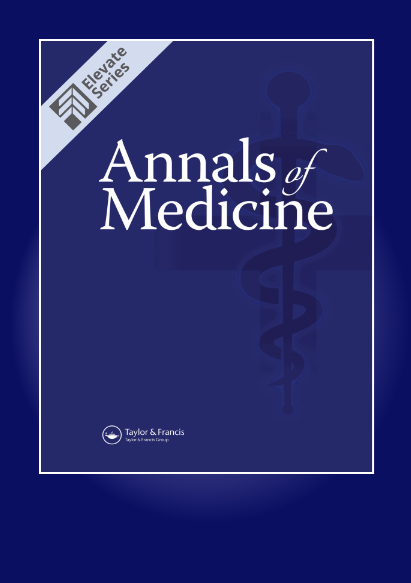噪声诱发的耳鸣在大鼠耳蜗核和下丘引起的转录谱变化
IF 4.9
2区 医学
Q1 MEDICINE, GENERAL & INTERNAL
引用次数: 0
摘要
导言耳鸣是一种常见的致残性疾病,其特征是在没有外部声刺激的情况下感知声音。听觉通路的过度活跃是耳鸣发生的关键因素。本研究旨在通过转录组分析,研究耳鸣发生后耳蜗背核(DCN)和下丘(IC)的基因表达变化。方法为了确认耳鸣行为的存在,我们采用了间隙前脉冲抑制声惊跳(GPIAS)反应范式。此外,我们还进行了听性脑干反应(ABR)测试以确定基线听阈,并在大鼠暴露于噪声(8-16 kHz、126 dBHL、2 h)一周后重复该测试。我们采集了耳鸣组和非耳鸣组大鼠的直流神经网和集成电路组织样本。我们采用 RNA 测序和定量 PCR 技术来分析这两组之间基因表达的变化。结果我们的结果表明,暴露于噪声的大鼠出现了类似耳鸣的行为,GPIAS 测量结果也证明了这一点。我们在 DCN 中发现了 61 个上调基因和 189 个下调基因,在 IC 中发现了 396 个上调基因和 195 个下调基因。对直流神经网的富集分析表明,离子跨膜转运调节、突触传递和神经元凋亡过程的负调控参与了耳鸣的发生。在 IC 中,富集分析表明,谷氨酸能突触和神经活性配体-受体相互作用途径可能在耳鸣发生过程中起重要作用。结论我们的研究结果表明,与耳鸣组和非耳鸣组相比,在耳鸣组和集成电路中,与神经元兴奋性改变有关的通路相关的差异表达基因(DEGs)出现了富集。这表明耳鸣模型大鼠的直流神经网和集成电路内的神经元兴奋性均呈上升趋势。此外,DCN 中与突触可塑性变化有关的信号通路的丰富表明,兴奋性变化可能会传播到 IC。此外,在直流神经网中差异表达的基因中,与突触可塑性变化有关的信号通路丰富,这表明兴奋性变化可能会传播到集成电路。本文章由计算机程序翻译,如有差异,请以英文原文为准。
Transcriptional profile changes caused by noise-induced tinnitus in the cochlear nucleus and inferior colliculus of the rat.
INTRODUCTION
Tinnitus is a prevalent and disabling condition characterized by the perception of sound in the absence of external acoustic stimuli. The hyperactivity of the auditory pathway is a crucial factor in the development of tinnitus. This study aims to examine genetic expression variations in the dorsal cochlear nucleus (DCN) and inferior colliculus (IC) following the onset of tinnitus using transcriptomic analysis. The goal is to investigate the relationship between hyperactivity in the DCN and IC.
METHODS
To confirm the presence of tinnitus behavior, we utilized the gap pre-pulse inhibition of the acoustic startle (GPIAS) response paradigm. In addition, we conducted auditory brainstem response (ABR) tests to determine the baseline hearing thresholds, and repeated the test one week after subjecting the rats to noise exposure (8-16 kHz, 126 dBHL, 2 h). Samples of tissue were collected from the DCN and IC in both the tinnitus and non-tinnitus groups of rats. We employed RNA sequencing and quantitative PCR techniques to analyze the changes in gene expression between these two groups. This allowed us to identify any specific genes or gene pathways that may be associated with the development or maintenance of tinnitus in the DCN and IC.
RESULTS
Our results demonstrated tinnitus-like behavior in rats exposed to noise, as evidenced by GPIAS measurements. We identified 61 upregulated genes and 189 downregulated genes in the DCN, along with 396 upregulated genes and 195 downregulated genes in the IC. Enrichment analysis of the DCN revealed the involvement of ion transmembrane transport regulation, synaptic transmission, and negative regulation of neuron apoptotic processes in the development of tinnitus. In the IC, the enrichment analysis indicated that glutamatergic synapses and neuroactive ligand-receptor interaction pathways may significantly contribute to the process of tinnitus development. Additionally, protein-protein interaction (PPI) networks were constructed, and 9 hub genes were selected based on their betweenness centrality rank in the DCN and IC, respectively.
CONCLUSIONS
Our findings reveal enrichment of differential expressed genes (DEGs) associated with pathways linked to alterations in neuronal excitability within the DCN and IC when comparing the tinnitus group to the non-tinnitus group. This indicates an increased trend in neuronal excitability within both the DCN and IC in the tinnitus model rats. Additionally, the enriched signaling pathways within the DCN related to changes in synaptic plasticity suggest that the excitability changes may propagate to IC.
NEW AND NOTEWORTHY
Our findings reveal gene expression alterations in neuronal excitability within the DCN and IC when comparing the tinnitus group to the non-tinnitus group at the transcriptome level. Additionally, the enriched signaling pathways related to changes in synaptic plasticity in the differentially expressed genes within the DCN suggest that the excitability changes may propagate to IC.
求助全文
通过发布文献求助,成功后即可免费获取论文全文。
去求助
来源期刊

Annals of medicine
医学-医学:内科
CiteScore
4.90
自引率
0.00%
发文量
292
审稿时长
3 months
期刊介绍:
Annals of Medicine is one of the world’s leading general medical review journals, boasting an impact factor of 5.435. It presents high-quality topical review articles, commissioned by the Editors and Editorial Committee, as well as original articles. The journal provides the current opinion on recent developments across the major medical specialties, with a particular focus on internal medicine. The peer-reviewed content of the journal keeps readers updated on the latest advances in the understanding of the pathogenesis of diseases, and in how molecular medicine and genetics can be applied in daily clinical practice.
 求助内容:
求助内容: 应助结果提醒方式:
应助结果提醒方式:


